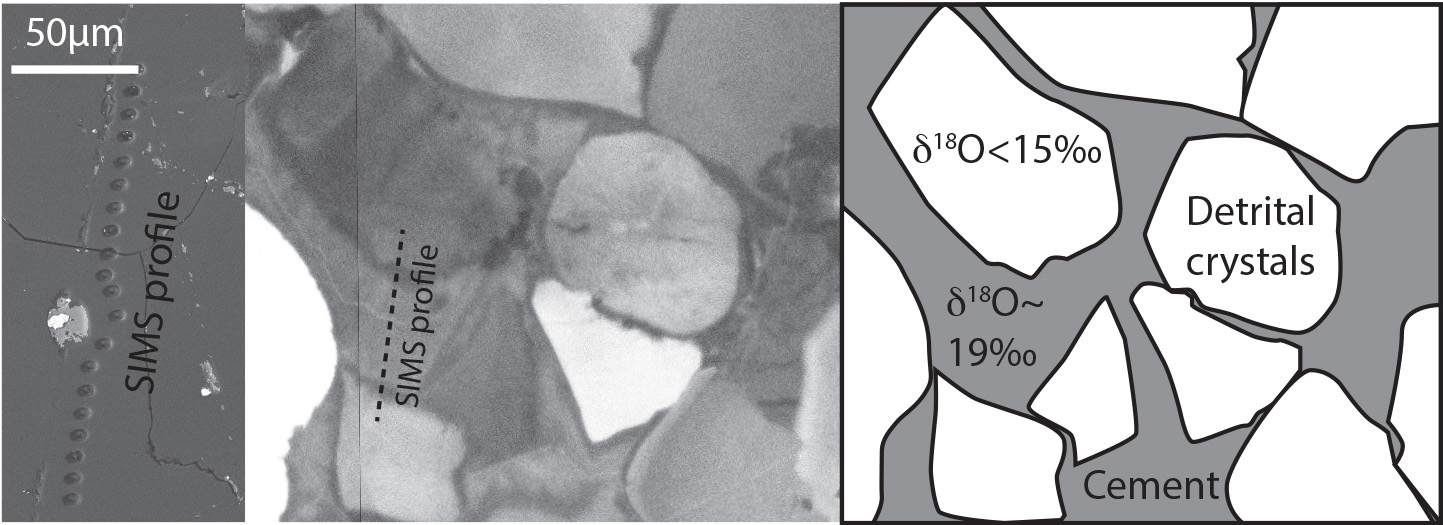However, deep-water exploration is very expensive, and of the 74 exploration holes drilled up until 2001, only 22% struck oil. Research that allows oil companies to better target their exploration in the area could provide significant cost savings.
In order to better target exploration, a team composed of George Mills and Stephen Molyneux from Carnarvon Petroleum, Julien Bourdet from CSIRO and Laure Martin and Matvei Aleshin from the University of Western Australia have been exploring reservoir rocks laid down in the Basin during the late Triassic. During that period, a large delta, the Mungaroo Delta, opened onto Exmouth Sub-Basin providing the organic rich sediments needed for gas formation and sands that can host the hydrocarbons accumulations. This makes these Triassic rocks particularly interesting to oil and gas companies. Despite this, it was found that at particular locations reservoir rocks had very poor porosity and hence could not hold much gas.
The team used scanning electron microscopy with a cathodoluminescence filter to see what was filling the pore spaces in the reservoir rock. They discovered that quartz had formed in the spaces between the grains in the rock forming a cement, leaving no room for hydrocarbon to be trapped. In-situ oxygen isotope composition in the quartz performed using the SIMS Cameca 1280 at our UWA facility, combined with fluid inclusion analysis at CSIRO, suggested they formed in response to a mineral laden fluid from deep in the earth.

Figure show a sample from the drill core and the profile along which the SIMS measurements were taken. Grey areas on the diagram indicate the quartz cement.
The researchers knew that the South part of the Exmouth Basin is affected by a complex network of deep faults, or cracks, in the Earth’s crust. These would allow for hot, mineral-laden water, heated by magma deeper in the earth, to travel up to the reservoir rocks. This is important because it means that rocks close to these faults are likely to be affected by quartz filling the pore spaces. By knowing this, companies can target their exploration away from these regions allowing them to make informed decisions about where to explore.
October 23, 2020